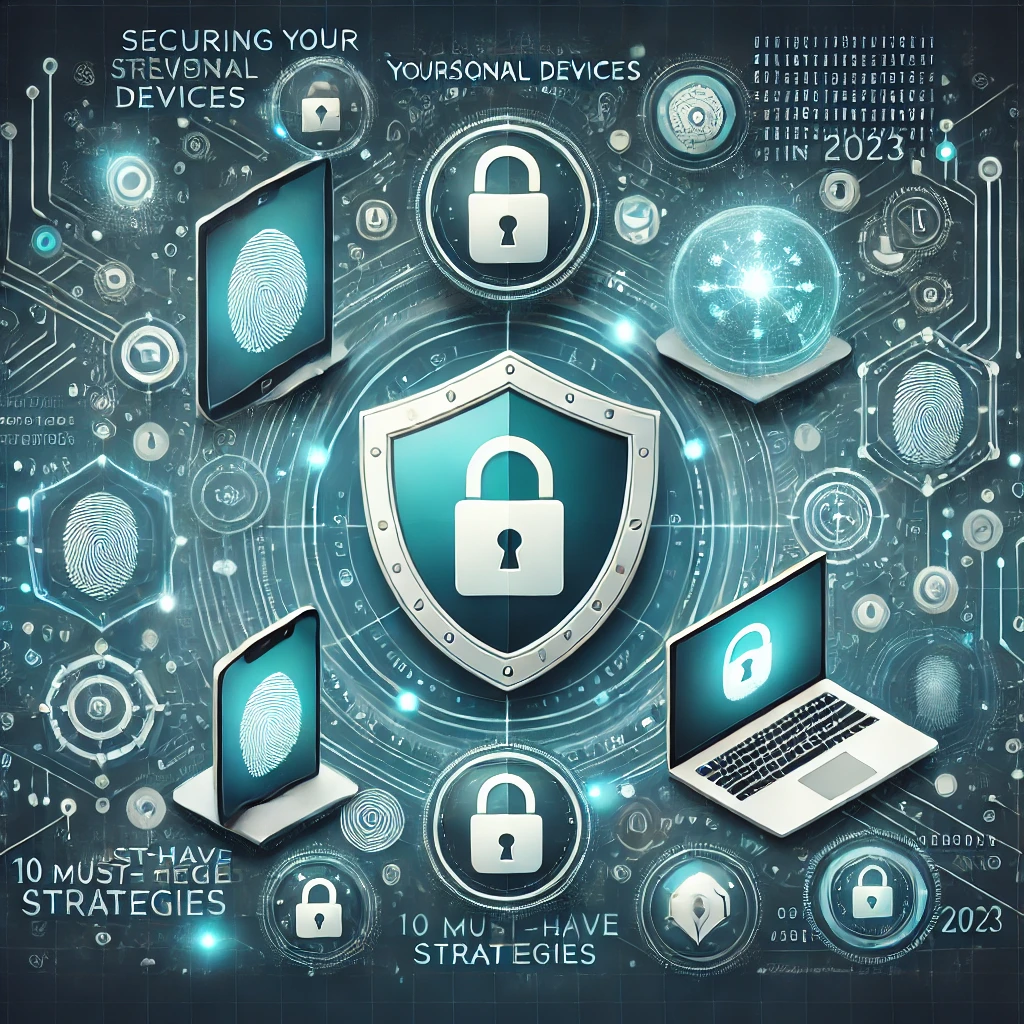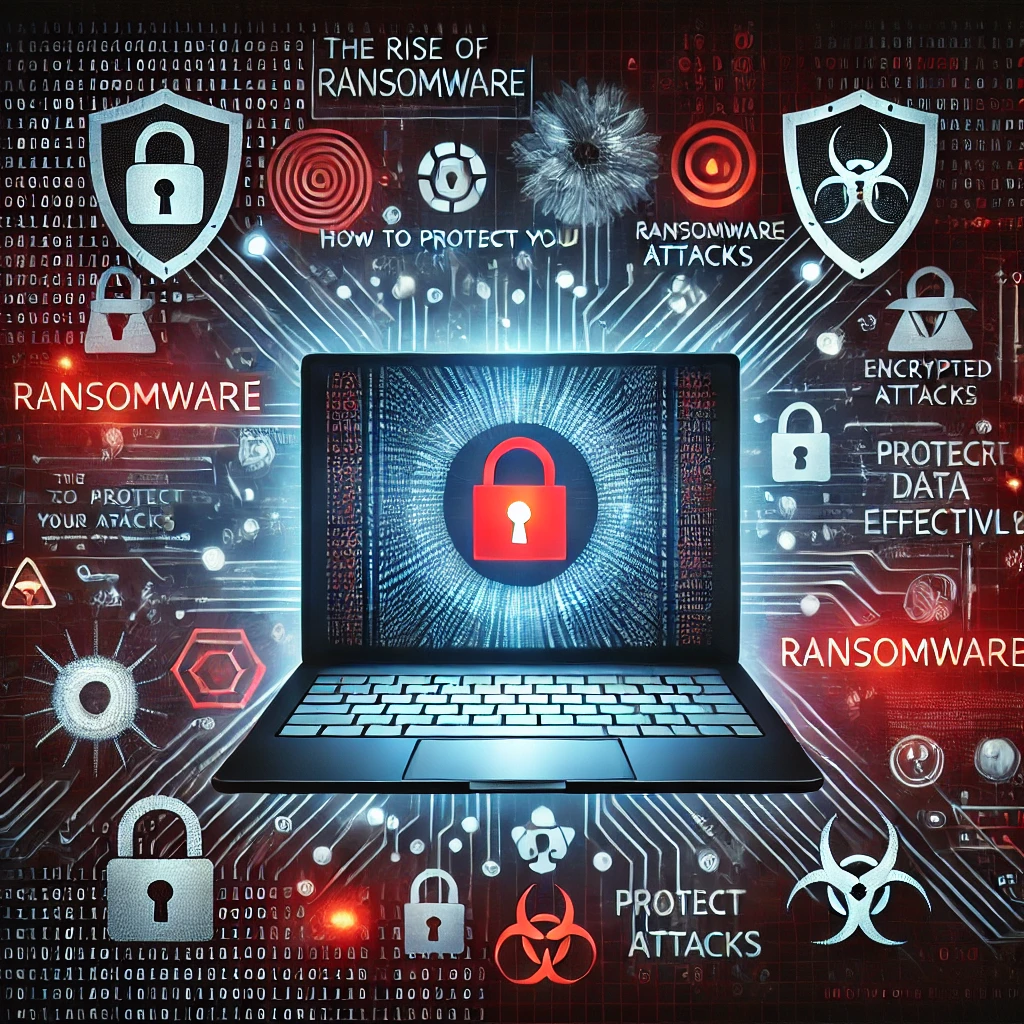Introduction
In today’s technology-driven world, our personal devices are practically extensions of ourselves. From smartphones brimming with personal photos and messages, to tablets and laptops housing financial records and critical work files, these devices are gateways to every aspect of our modern lives. However, as convenient as they are, they also represent prime targets for cybercriminals looking to exploit weaknesses for their own gain.
Think about it: we log in to our bank accounts, pay bills, share intimate details on social media, and manage important projects—often from the same device. Without proper safety measures, we inadvertently expose ourselves to data breaches, identity theft, and a host of other digital dangers.
This comprehensive guide will walk you through 10 must-have strategies to secure your personal devices in 2023. We’ll explore robust defense mechanisms, break down critical security concepts in a conversational way, and provide clear action steps so you can lock down your digital world. Let’s dive in!
Table of Contents
- Why Securing Personal Devices Matters
- Enable Multi-Factor Authentication (MFA)
- Maintain Strong, Unique Passwords
- Keep Software Updated and Patched
- Use Antivirus and Anti-Malware Tools
- Be Cautious with Public Wi-Fi
- Secure Your Home Network
- Regularly Back Up Your Data
- Beware of Phishing and Social Engineering
- Adopt Safe Browsing Habits
- Conclusion
1. Why Securing Personal Devices Matters
Cyber threats are no longer distant, abstract concepts. They’re day-to-day realities that can impact anyone with an online presence—or simply anyone with a device connected to the internet. Here’s why securing personal devices is critical:
- Protect Your Privacy: Your phone and laptop can reveal more about you than any other possessions. Unsecured devices risk leaking personal photos, messages, or financial details to intruders.
- Prevent Identity Theft: Criminals can manipulate hacked devices to access your digital identity—credit card numbers, social media accounts, and more—leading to fraudulent transactions or impersonations.
- Shield Sensitive Work Data: If you use your personal device for work (a common scenario in hybrid or remote environments), a single security slip could compromise confidential business information.
- Maintain Device Performance: Malware infections can slow down your devices significantly or even cause hardware damage.
- Comply with Regulations: For professionals operating under data privacy regulations (like HIPAA or GDPR), failing to secure devices can have serious legal and financial consequences.
In short, proactive device security is central to ensuring a safe and productive digital experience—both personally and professionally.
2. Enable Multi-Factor Authentication (MFA)
Multi-Factor Authentication (MFA) is a security process requiring more than just a password to gain entry. Consider it a second (or third) lock on your digital door, ensuring that even if hackers guess or steal your password, they still need an additional code or biometric confirmation to log in.
How It Works
- Password/PIN (Something You Know)
- The first layer is your primary credential.
- Phone or Hardware Token (Something You Have)
- You receive a code via text message, email, or use an authenticator app. Alternatively, you might use a physical security key.
- Biometrics (Something You Are)
- Fingerprint scans, facial recognition, or voice ID. These are unique markers that confirm your identity.
MFA drastically reduces successful breaches. Even if a cybercriminal obtains your password, it’s still an uphill battle for them to pass the second or third checkpoint.
3. Maintain Strong, Unique Passwords
We’ve all heard this advice a thousand times, but password hygiene is foundational to device security. Cybercriminals often rely on guesswork, brute force attacks, or data from previous breaches to break into accounts secured by weak passwords.
Best Practices for Password Security
- Length Over Complexity
- A password with 12-16 characters (or more) is harder to crack.
- Consider using a passphrase: a series of unrelated words strung together (e.g., RedMountain!42Bird).
- Unique for Every Account
- Reusing a single password across multiple websites or apps is a big security risk.
- If one site is compromised, attackers can attempt the same login details everywhere else.
- Use a Password Manager
- Tools like 1Password, LastPass, or Bitwarden generate strong passwords and store them securely.
- You only need to remember a single master password.
- Avoid Personal Information
- Don’t include your birthday, pet name, or easily guessed details in any password.
By adopting proper password habits, you effectively reinforce the biggest barrier between your data and would-be hackers.
4. Keep Software Updated and Patched
Software updates aren’t merely about new features or fancy user interfaces; they often carry critical security patches that close vulnerabilities discovered in the current system. Whether you’re using Windows, macOS, Android, or iOS, ignoring those “Update Available” prompts can leave the door open for cyber threats.
Tips for Staying Updated
- Enable Automatic Updates: Let your devices handle the job so you never miss a patch.
- Pay Attention to Firmware: This includes routers and smart home devices. They can also be susceptible to exploits if not maintained.
- Monitor App Updates: Keep your applications, especially browsers and essential programs, consistently updated for improved security.
Patching is a simple yet powerful way to reduce known exploits that criminals often capitalize on.
5. Use Antivirus and Anti-Malware Tools
A robust antivirus or anti-malware solution is like having a digital security guard stationed on your device 24/7. These programs detect, quarantine, and remove malicious software trying to infiltrate your system.
Selecting the Right Software
- Reputable Vendors: Brands like Norton, Kaspersky, Bitdefender, or Malwarebytes are often recommended.
- Real-Time Scanning: Ensures new downloads and processes are continuously screened.
- Ransomware Protection: Opt for software that focuses on ransomware defenses, as ransomware attacks have surged in recent years.
- Regular Scans: Schedule daily or weekly scans to keep your system clean and updated with the latest virus definitions.
Remember: While free antivirus solutions can provide basic protection, premium versions typically offer comprehensive coverage and advanced features like a secure firewall, anti-phishing filters, and online payment protection.
6. Be Cautious with Public Wi-Fi
Public Wi-Fi at coffee shops, libraries, airports, or hotels can be a breeding ground for hackers looking for easy targets. These networks are often unencrypted or share a common password, making it easier for malicious actors to eavesdrop on data transmissions.
How to Stay Safe
- Avoid Sensitive Transactions
- Steer clear of online banking or accessing confidential emails on public networks.
- Save those tasks for later or use your mobile data connection if you must.
- Use a VPN (Virtual Private Network)
- A VPN encrypts your internet traffic, preventing snoopers from reading or intercepting your data.
- Paid VPNs like ExpressVPN, NordVPN, or Surfshark often have stronger policies on privacy and data retention.
- Verify Network Names
- Attackers sometimes create malicious Wi-Fi hotspots named similarly to a legitimate network. Always double-check.
- Turn Off Automatic Connections
- Disable auto-connect features so your device doesn’t unknowingly link to unsafe networks.
A dose of caution goes a long way in keeping your information secure while browsing outside your trusted home or office environments.
7. Secure Your Home Network
Just because you’re surfing from home doesn’t mean you’re immune to cyber attacks. Routers and home networks can be vulnerable if left at factory settings or if updates are neglected.
Steps to Fortify Your Home Network
- Change Default Passwords
- The default router admin password is often easy to guess. Make sure you set a strong, unique one.
- Enable WPA3 or WPA2 Encryption
- Choose WPA2-AES or WPA3 if your router supports it. Avoid outdated standards like WEP.
- Regularly Update Router Firmware
- Check your router’s admin dashboard or manufacturer’s website for firmware updates.
- Set Up a Guest Network
- If your router supports it, create a separate Wi-Fi network for guests or IoT devices. This prevents direct access to your primary network.
- Disable WPS (Wi-Fi Protected Setup)
- WPS can be a backdoor for attackers, so turning it off bolsters your defenses.
By locking down your home network, you ensure the foundation of your online activities is as secure as possible.
8. Regularly Back Up Your Data
Data backups are your digital safety net. Even if malware, system crashes, or accidental deletions occur, you’ll still have access to your critical information.
Backup Methods
- External Hard Drives
- Manually or automatically copy important files to an external HDD or SSD.
- Keep the drive in a safe location, disconnected from your computer when not in use.
- Cloud Storage
- Services like Google Drive, Dropbox, or Microsoft OneDrive let you store files online, accessible from anywhere.
- Look for providers offering end-to-end encryption for added security.
- Network Attached Storage (NAS)
- A NAS device connected to your home network offers more robust backup and file-sharing capabilities.
- Perfect for users with large amounts of data or advanced privacy requirements.
- Offline Copies
- For extremely sensitive documents, consider also printing hard copies or storing them on encrypted USB drives.
Set a regular schedule for backups—weekly or monthly—and make sure to test restoring your data occasionally to ensure everything is functioning properly.
9. Beware of Phishing and Social Engineering
Phishing isn’t just about spam emails anymore. Attackers also use text messages (smishing), voice calls (vishing), and social media DMs to trick people into revealing sensitive information. Modern campaigns can be highly sophisticated, often mimicking official communications from banks, tech companies, or even government agencies.
How to Recognize Phishing Attempts
- Mismatch in URLs: Hover over links to see if the actual URL matches the displayed text or known domain.
- Grammar and Spelling Errors: While some phishing emails are polished, many still contain noticeable errors.
- Suspicious Attachments: Be cautious about opening files—especially .exe, .zip, or .doc with macros—from unverified sources.
- Urgent or Threatening Language: Fraudsters often create a sense of panic or urgency, urging you to act immediately.
Best Practices
- Never Share Passwords Over Email: Legitimate organizations won’t request passwords or sensitive credentials via email.
- Use Anti-Phishing Filters: Modern browsers and email providers typically have built-in filters.
- Educate Yourself Regularly: Stay updated on the latest phishing techniques and known scams.
Social engineering relies on psychological manipulation. Even if you have robust security tools, a single human error can undermine it all. Vigilance and healthy skepticism are your first lines of defense.
10. Adopt Safe Browsing Habits
Your browser is essentially your window to the internet, so adopting safe browsing habits is pivotal for device security.
Tips for Secure Web Surfing
- Check for HTTPS
- Make sure websites you visit have “https://” in the URL. The “S” stands for secure, meaning data between you and the site is encrypted.
- Beware of Pop-Ups
- Malicious pop-ups can trick you into downloading malware. Use a pop-up blocker or a browser that filters them by default.
- Keep Browser Extensions Minimal
- Extensions can be helpful, but malicious ones can harvest data. Only install reputable add-ons from trusted sources.
- Log Out from Sensitive Sites
- Whenever you finish using online banking or other critical services, log out rather than just closing the tab.
- Enable Safe Search
- Platforms like Google offer safe search settings to filter out malicious or inappropriate content.
- Be Careful with Downloads
- Download only from official, trusted websites. Random downloads from pop-up ads or suspicious links can compromise your entire system.
By honing your daily browsing behavior, you’re less likely to fall prey to malware downloads, phishing sites, or other web-based attacks.
11. Conclusion
Securing your personal devices isn’t a one-time checkbox—it’s an ongoing commitment. As cyber threats continue to evolve, so must your awareness and tools. From enabling multi-factor authentication and fortifying your home network, to diligently backing up data and exercising caution with public Wi-Fi, every step builds upon the last, resulting in a safer digital experience.
By implementing these 10 must-have strategies, you significantly reduce the risk of falling victim to cyberattacks. Think of these measures as layers of protection: no single method is foolproof, but together, they create a formidable shield that deters most hackers. With consistent updates to your security practices and a proactive mindset, you’ll remain a step ahead in the ever-changing cybersecurity landscape.
Now that you have a clear roadmap for safeguarding your personal devices, take action! Review your password practices, enable MFA where possible, update that software you’ve been putting off, and ensure your antivirus is running smoothly. Every small effort compounds, ensuring your digital footprint remains resilient in the face of adversity.


